April 26, 2024 | 21:07 GMT +7
April 26, 2024 | 21:07 GMT +7
Hotline: 0913.378.918
April 26, 2024 | 21:07 GMT +7
Hotline: 0913.378.918
Deputy Minister of Agriculture and Rural Development Le Quoc Doanh chaired recently the National Steering Committee on CMD prevention and control in Tay Ninh Province,
CMD was first detected in Tay Ninh in 2017, and until November 18, 2020, they were found in crops of 22 provinces, according to the Plant Protection Department.
CMD is rapidly spreading
In 2020, cassava has been grown on 421,058 hectares in Vietnam with the infected area accounting for over 12%, which is 22,964-hectare increase compared to the same period last year. Main varieties include KM94 (37%), KM 140 (18%), KM419 (15%), HLS-11 (6%), among other local varieties. HLS11, KM419, KM 98-5, KM 60, SM937-26, and the like are most susceptible to the disease.
In Tay Ninh Province, cassava has been grown on 56,000 hectares with the infected area constituting 77%. 23,439 hectares of cassava have been harvested.
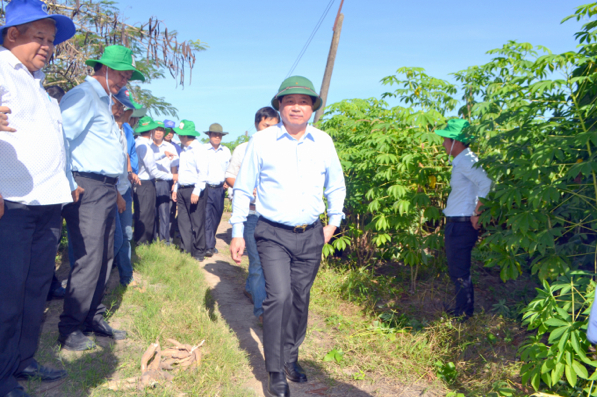
National Steering Committee on CMD prevention and control, led by Deputy Minister of Agriculture and Rural Development Le Quoc Doanh, visited Tan Hoi commune, Tan Chau district to examine the experimental plots where CMD-resistant varieties are grown. Photo: Tran Trung.
A steering committee has been established in almost all affected provinces and cities to take drastic measures with the view to halting the spread of CMD.
In addition, Provincial People’s Committees, Departments of Agriculture and Rural Development, as well as Branches of Crop Production and Plant Protection have issued a large number of directives on preventing CMD and organizing conferences to encourage farmers’ use of disease-free varieties
CMD-resistant varieties found
Ministry of Agriculture and Rural Development (MARD), Agricultural Genetics Institute (AGI) and enterprises in the field have been cooperating to produce CMD-resistant varieties since October 2018. Among 157 imported and 250 domestic cassava varieties, 8 have been found to develop resistance to CMD, namely HN4, C48, C36, C4, HN3, C9, C74 and HN2. These varieties, besides, prove to produce good yield (38-64 tonnes/ha) and high-starch content (26-30%), which is considered comparable to best quality varieties in Tay Ninh Province, namely KM419 and KM140 (44-48 tonnes/ha).
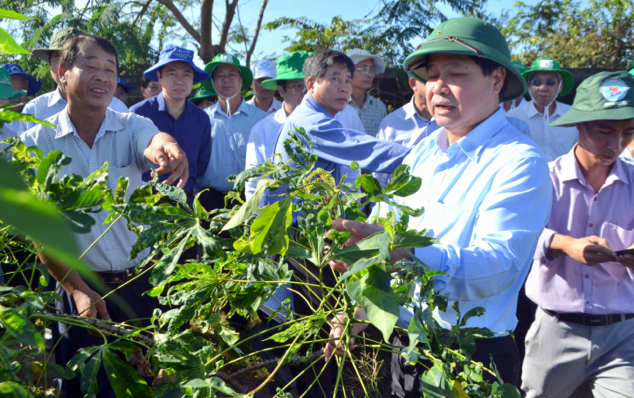
Deputy Minister Le Quoc Doanh is examining the comparable cassava varieties. Photo: Tran Trung.
In order to evaluate how these cassava varieties are resistant to CMD, National Steering Committee on CMD prevention and control, led by Deputy Minister of Agriculture and Rural Development Le Quoc Doanh, visited Tan Hoi commune, Tan Chau district to examine the experimental plots where CMD-resistant varieties are grown. This model was jointly conducted by Agricultural Genetics Institute, International Center for Tropical Agriculture (CIAT) and Tay Ninh’s Branch of Crop Production and Plant Protection.
In the three experimental plots, CMD-resistant varieties showed its healthy growth, which is even better than that of other high quality varieties such as KM419 and HL-S1.

CMD-resistant varieties have proved a success. Photo: Tran Trung.
Based on the resistance to CMD, productivity, and starch content, the varieties including C4, C9, C36, C48, C97, HN3, HN4, HN5, KM 140, KM 419 were found to meet the expected outcomes. Among those, HN3 and HN5 proved far better resistance to CMD. Even though they cannot be densely grown while having lower starch content than others, they still constitute a good choice, according to professor Le Duy Ham, former Director of Agricultural Genetics Institute.

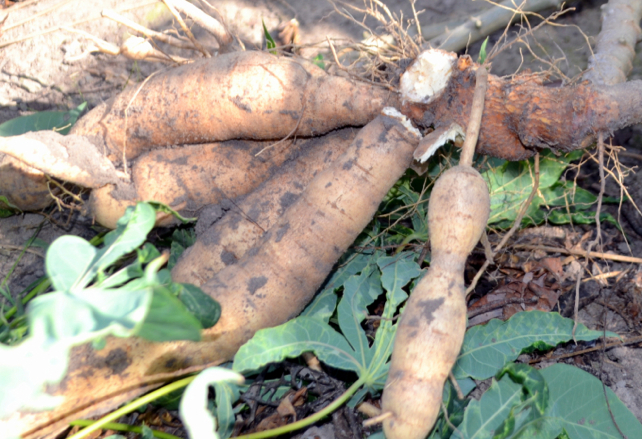
HN3 and HN5 varieties proved its good performance in terms of yield, starch content and resistance to CMD. Photo: Tran Trung.
CMD Prevention
At the conference, delegates actively discussed the root cause for CMD and find solutions to preventing the disease. Most delegates agreed that cassavas are easy to grow, require little care while bringing good income, thus, they are widely grown. Besides, they are a vegetatively propagated crop. The two aforementioned features can lead to the exponential spread of the disease.
Meanwhile, the unchecked distribution of infected vegetative cuttings might also worsen the spread of disease.
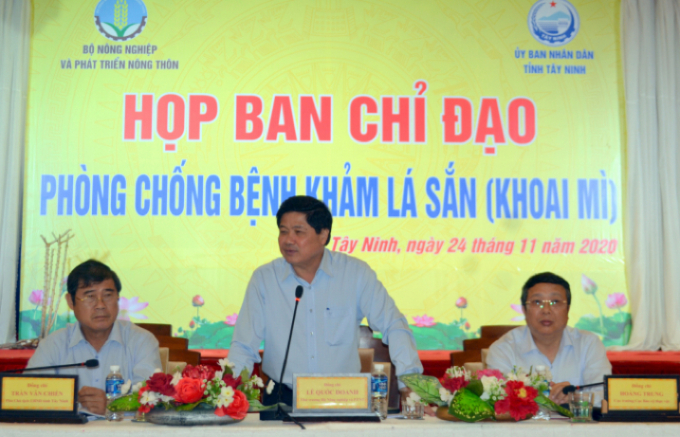
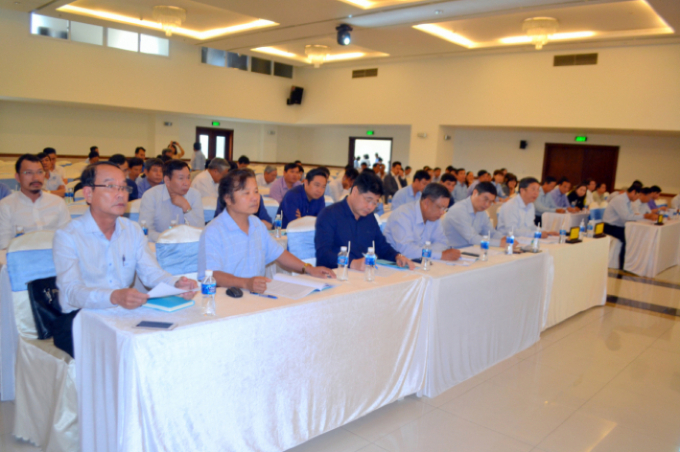
Deputy Minister Le Quoc Doanh addressed the Conference. Photo: Tran Trung.
Thus, it is necessary to increase the availability of disease-free varieties to provide for farmers while advising them to grow cassava for just one or two crops per year at the same period. For those growers who still wish to grow three crops, it is essential to turn to crop rotation when another plant is grown instead, in order to reduce risk of disease’s spread.
According to Director of Tay Ninh Province’s Department of Agriculture and Rural Development Nguyen Dinh Xuan, cassava is a pivotal crop in the province. Therefore, that the CMD-resistant varieties with high yield were found is good news to farmers.

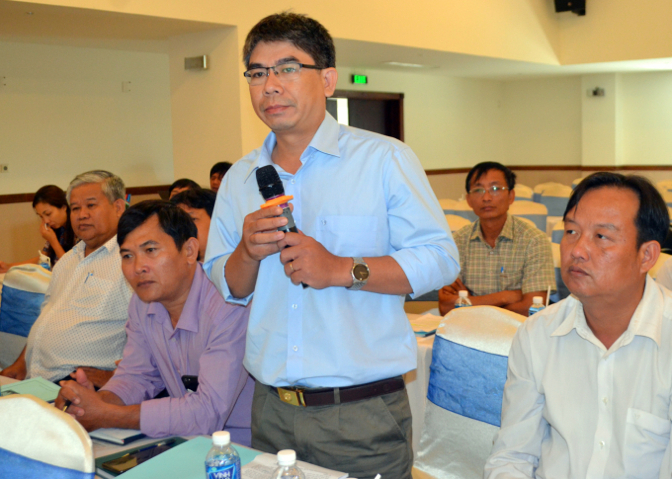
Delegates discussed solutions at the conference. Photo: Tran Trung.
In terms of solutions, delegates highlighted that authorities need to better control the trade of cassava cuttings, especially those in the infected areas. Stricter punishment should also be imposed on the offence.
Author: Tran Trung. Translated by Meagan Phan. Edited by Duc Huy.

(VAN) South Korean enterprises have increased their investment capital in the city of Hai Phong by nearly VND 400 million following a series of meetings.
/2024/04/25/4132-3-083738_65.jpg)
(VAN) On the sandy area of Ly Trach commune, the model of growing Taiwan custard apples in a 'nature-based' direction has brought high economic efficiency.
/2024/04/24/1631-vmc-vietnam-aims-to-become-a-professional-veterinary-medicine-manufacturer-for-poultry-in-the-vietnamese-market-191200_621.jpg)
(VAN) In the 20-year journey (April 24, 2004 - April 24, 2024), from a distribution enterprise, VMC Vietnam rose to become a top-quality domestic veterinary medicine manufacturer in Vietnam.
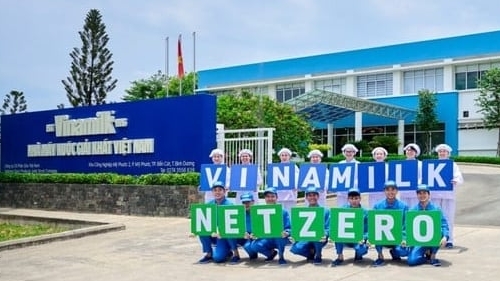
(VAN) Vinamilk currently owns three units, including two factories and one farm, that meet this standard, showing that Drastic steps of businesses on the path towards Net Zero by 2050.
/2024/04/24/3142-2-012844_975.jpg)
(VAN) Right at the beginning of the second quarter of 2024, Agribank added VND 35,000 billion in preferential credit capital for individual and enterprise customers.
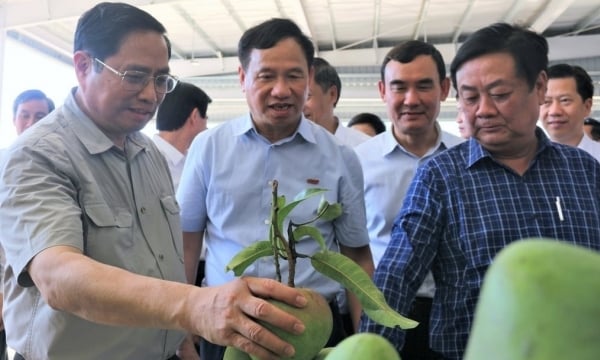
(VAN) From the success of factories in Ninh Binh and Gia Lai, Dong Giao Foodstuff Export Joint Stock Company (Doveco) launched its third factory in Son La in May 2023.
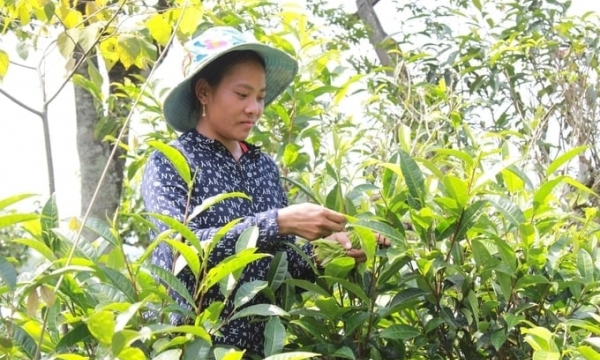
(VAN) Vietnam has mainly introduced chemicals into agricultural production for about 50 years, so many localities still practice traditional agriculture.